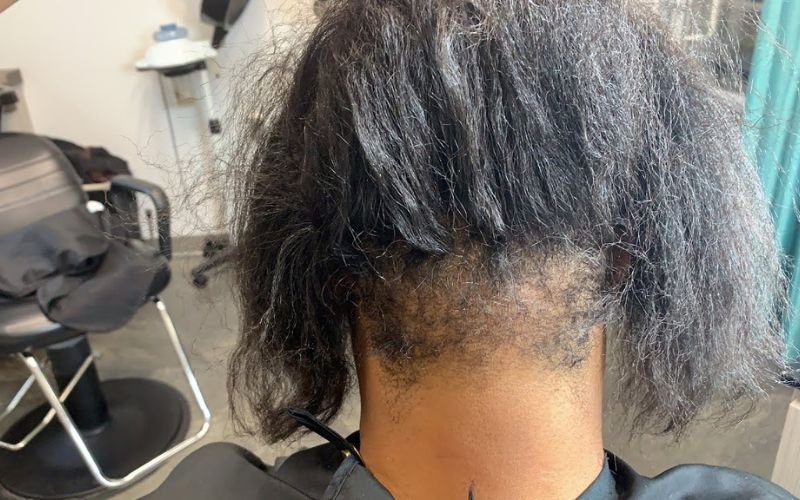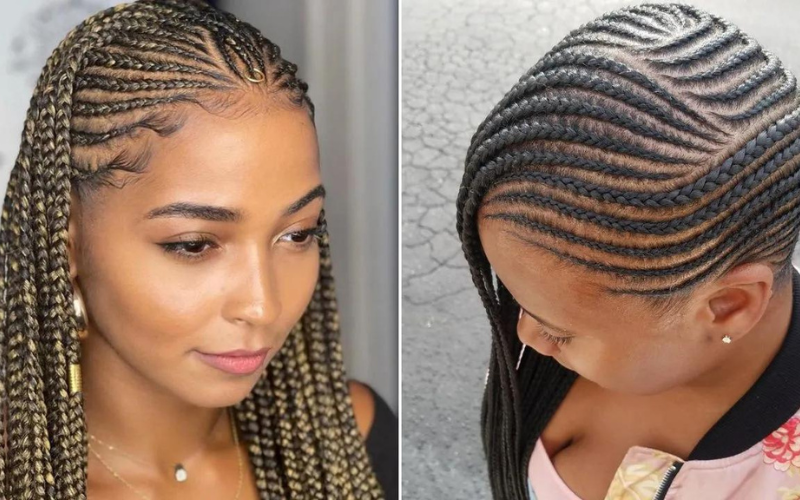Cornrow braids are a popular and culturally significant hairstyle with roots deeply embedded in African history. They offer a versatile and stylish way to manage natural hair, allowing for creative expression and long-lasting wear. However, a common concern among those who wear or consider wearing cornrows is whether they might damage the hair. This article delves into the potential risks of cornrow braids, offering insights into how to maintain healthy hair while enjoying this traditional style.
Table of Contents
ToggleThe History and Significance of Cornrow Braids
Before addressing the potential impact of cornrows on hair health, it’s essential to understand the cultural significance of this hairstyle. Cornrow braids have been worn for centuries by people of African descent. They were often used as a way to signify various things, such as tribal affiliation, social status, and even readiness for marriage. In modern times, cornrows continue to be a symbol of cultural pride and identity, as well as a practical and fashionable choice for managing natural hair.
How Cornrow Braids Are Created
Cornrow braids are made by sectioning the hair into parts and braiding it close to the scalp in a continuous, raised row. This process involves intricate and tight braiding techniques, which can vary in complexity depending on the desired pattern and style. Because cornrows are braided so close to the scalp, they can remain in place for several weeks, making them a convenient, low-maintenance option.
Potential Risks of Cornrow Braids
While cornrow braids offer many benefits, they can also pose risks to hair health if not done or maintained properly. Here are some of the potential issues that could arise:
1. Tension and Traction Alopecia
One of the primary concerns with cornrow braids is traction alopecia, a condition caused by excessive tension on the hair follicles. When braids are done too tightly, the constant pulling can weaken the hair shaft and damage the hair follicles, leading to hair loss, particularly along the hairline. This type of hair loss can be gradual and, if not addressed, may become permanent.
2. Hair Breakage
The tightness required to keep cornrow braids in place can also lead to hair breakage. Hair that is pulled too tightly is more prone to snapping, especially if it is already fragile due to dryness, previous chemical treatments, or overall poor hair health. Additionally, if the ends of the hair are not properly protected, they can become brittle and break off.
3. Scalp Irritation
Wearing cornrows can sometimes lead to scalp irritation, especially if the braids are too tight or if the wearer has sensitive skin. This irritation can manifest as redness, itching, or even sores on the scalp. In severe cases, it could lead to infection if not treated promptly.
4. Dryness and Lack of Moisture
Cornrow braids can make it difficult to moisturize the scalp and hair adequately. Since the hair is tightly bound, it’s harder for moisture to penetrate the braids, leading to dryness. Dry hair is more susceptible to damage, including breakage and split ends.
How to Prevent Hair Damage with Cornrow Braids
Despite these potential risks, it is possible to wear cornrow braids without causing significant damage to your hair. Here are some tips to keep your hair healthy while enjoying this stylish look:
1. Choose an Experienced Stylist
The skill of the person braiding your hair is crucial. An experienced stylist will know how to create cornrows without applying excessive tension. They will also understand the importance of leaving some slack at the roots to avoid pulling on the scalp. If you’re doing the braids yourself, take the time to practice and ensure you’re not braiding too tightly.
2. Don’t Leave Braids in Too Long
While cornrows are a low-maintenance style, it’s essential not to leave them in for too long. Aim to keep them in for no more than 6 to 8 weeks. Prolonged wear can increase the risk of traction alopecia and make it harder to keep the scalp and hair properly moisturized.
3. Moisturize Regularly
To combat dryness, it’s important to moisturize your hair and scalp regularly, even while your hair is in braids. Use a lightweight leave-in conditioner or a scalp oil that can penetrate the braids. Focus on keeping the scalp hydrated and the hair nourished.
4. Protect Your Hair at Night
Wearing a satin or silk scarf or bonnet at night can help protect your braids and prevent them from becoming frizzy. These materials are gentle on the hair and reduce friction, which can cause breakage.
5. Avoid Tight Hairstyles
When styling your cornrows, avoid pulling them back into tight ponytails or buns. This adds additional tension to the already taut braids and increases the risk of hair damage. Opt for looser styles that don’t put extra strain on your hairline.
6. Listen to Your Scalp
Pay attention to how your scalp feels when your braids are first installed and throughout the time you wear them. If you experience pain, tightness, or itching, it’s a sign that the braids may be too tight. Don’t hesitate to ask your stylist to adjust them or consider loosening them yourself.
Alternatives to Cornrow Braids
If you’re concerned about the potential risks of cornrow braids, there are several alternatives that can offer similar benefits without as much tension on the hair:
1. Loose Braids or Twists
Loose braids or twists are less likely to cause traction alopecia because they don’t require the same level of tightness as cornrows. They can still offer a protective style that lasts for several weeks.
2. Box Braids
Box braids are individual plaits that are not attached to the scalp, reducing the risk of tension-related damage. They can be done in various sizes and are a popular protective style.
3. Flat Twists
Flat twists are similar to cornrows but involve two strands of hair twisted together rather than three strands braided. This style is gentler on the scalp and still provides a neat, long-lasting look.
The Importance of Proper Hair Care
Regardless of the hairstyle you choose, proper hair care is essential to maintaining healthy hair. Here are some general tips to keep in mind:
1. Keep Your Scalp Clean
Regularly cleanse your scalp to remove dirt, oil, and product buildup. A clean scalp promotes healthy hair growth and prevents issues like dandruff and itching.
2. Deep Condition Regularly
Deep conditioning treatments help restore moisture and strengthen the hair. Aim to condition your hair deep at least once a month, even if it’s in a protective style like cornrows.
3. Trim Your Ends
Regular trims are essential to prevent split ends from traveling up the hair shaft and causing further damage. Trim your hair every 6 to 8 weeks to maintain its health.
4. Avoid Heat and Chemicals
Minimize the use of heat styling tools and chemical treatments, which can weaken the hair and make it more susceptible to damage. If you must use heat, always apply a heat protectant first.
Conclusion:
So, do cornrow braids damage hair? The answer depends largely on how they are done and how well you care for your hair while wearing them. While cornrows can potentially cause damage, especially if they are too tight or left in for too long, these risks can be mitigated with proper care and attention.
By choosing a skilled stylist, moisturizing regularly, and avoiding excessive tension, you can enjoy the beauty and convenience of cornrow braids without compromising your hair’s health. Always listen to your scalp and hair, and don’t be afraid to make adjustments to ensure that your protective style truly protects your hair.
Remember, the key to healthy hair lies not only in the styles you choose but in how you care for your hair every day. With the right approach, you can rock cornrow braids confidently, knowing that your hair is well-protected and nourished.
Author
-
Meet Robert Lee, our resident expert in the art of Pop Smoke braids. With a passion for urban culture and an eye for detail, Robert brings a unique blend of creativity and precision to every braid he crafts. As a dedicated writer, he shares his wealth of knowledge and insider tips to help you achieve the iconic style made famous by Pop Smoke. Get ready to elevate your look and embrace the swagger with Robert as your guide.
View all posts




